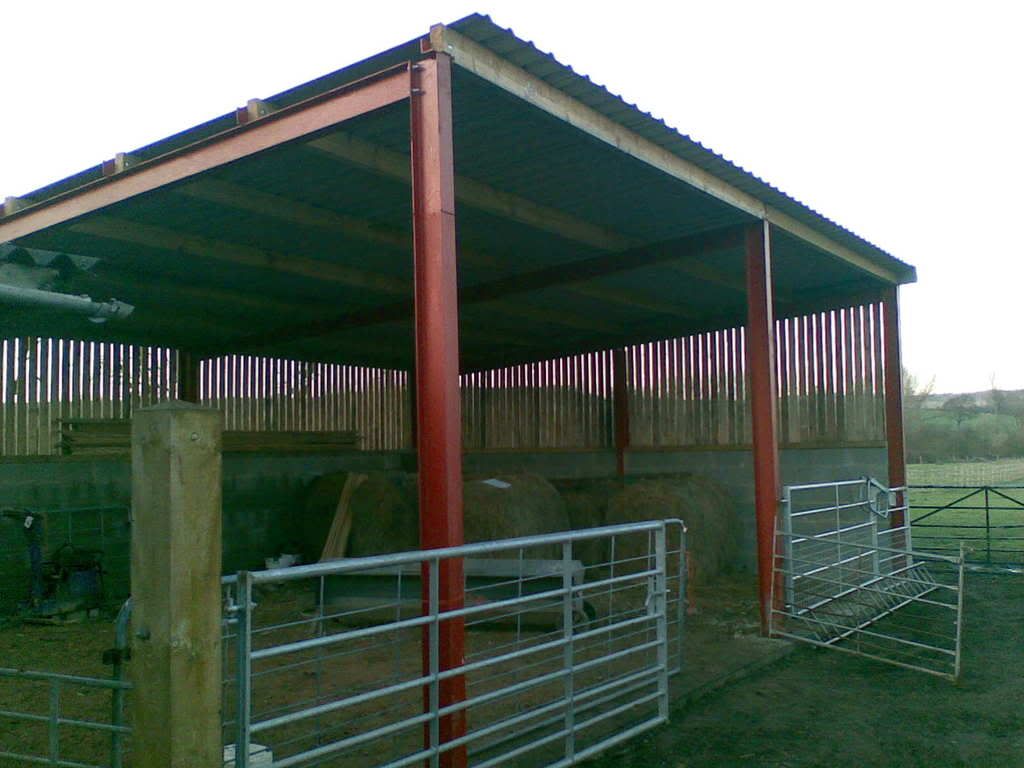
I have been asked to install some lights and a couple of sockets in this barn. It will be used for keeping sheeps and maybe some cows in.
The lights / switches / sockets will all be IP rated accesories, and the wiring will all be in PVC tubing.
There will be a light switch for the lights in each bay of the barn located on the two pieces of vertical steelwork nearest to the front of the picture.
The steelwork is concreted into the ground, but each 'goalpost' bit of steelwork is seperate from each other, bieng conneted with timber beams for the roof.
Does this steelwork require any bonding, and if so does each leg need doing, or would this cause problems with it being an agricultural installation, and livestock etc.?
The supply is either a T-N-CS or a TN-S (I really can't remember)
The whole of the farm part of the installation is protected by a 30mA RCD

